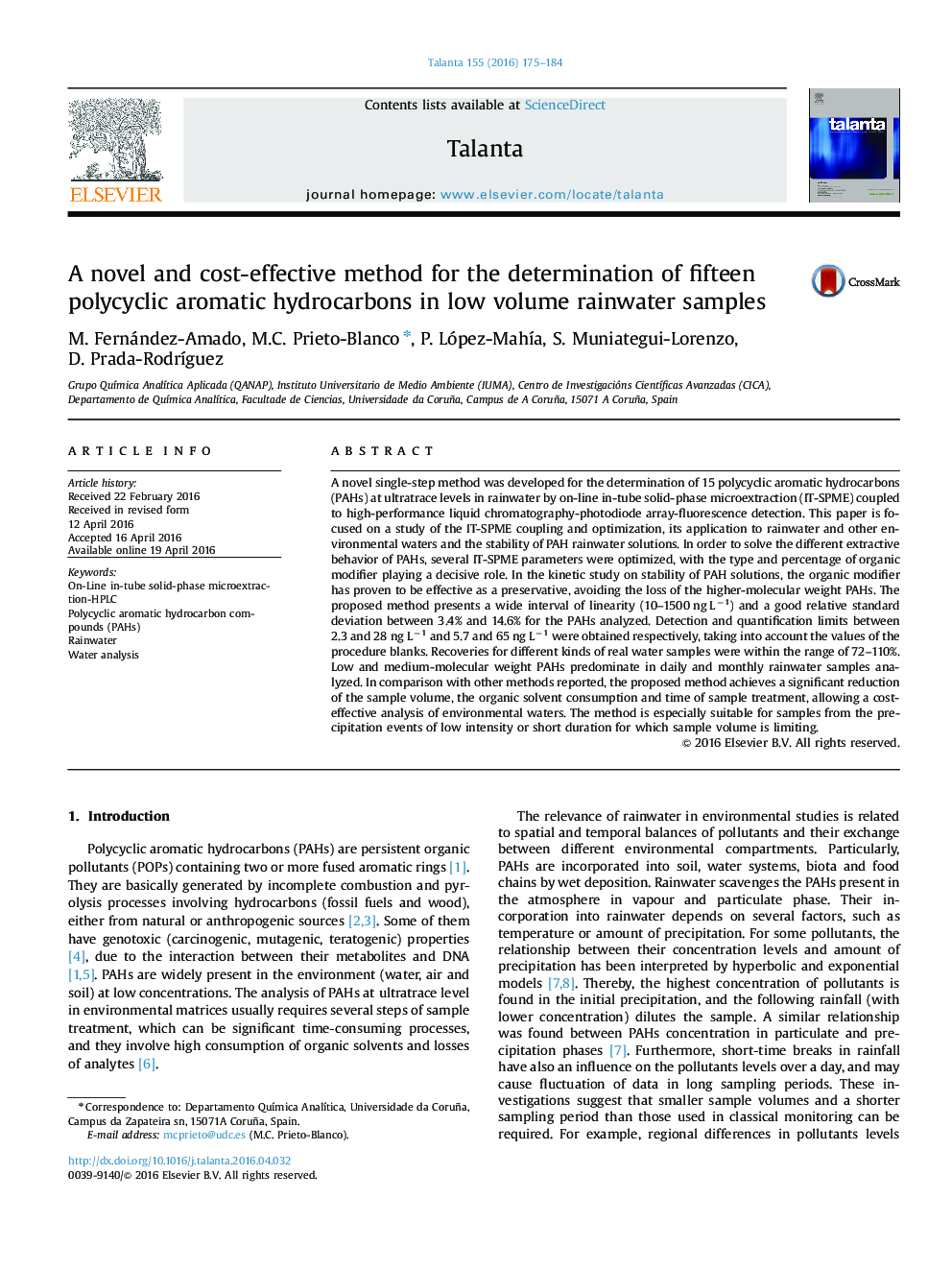| Article ID | Journal | Published Year | Pages | File Type |
|---|---|---|---|---|
| 1242428 | Talanta | 2016 | 10 Pages |
•A cost-effective method for the determination of PAHs at ng L−1 levels was developed.•Suitable method for PAH analysis of precipitation events with low sample volume.•Good compromise in 15 PAH extraction using an appropriate modifier.•The modifier behaves as a preservative, improving the PAH stability in rainwater.•The IT-SPME coupling is robust enough to be switched to a conventional configuration.
A novel single-step method was developed for the determination of 15 polycyclic aromatic hydrocarbons (PAHs) at ultratrace levels in rainwater by on-line in-tube solid-phase microextraction (IT-SPME) coupled to high-performance liquid chromatography-photodiode array-fluorescence detection. This paper is focused on a study of the IT-SPME coupling and optimization, its application to rainwater and other environmental waters and the stability of PAH rainwater solutions. In order to solve the different extractive behavior of PAHs, several IT-SPME parameters were optimized, with the type and percentage of organic modifier playing a decisive role. In the kinetic study on stability of PAH solutions, the organic modifier has proven to be effective as a preservative, avoiding the loss of the higher-molecular weight PAHs. The proposed method presents a wide interval of linearity (10–1500 ng L−1) and a good relative standard deviation between 3.4% and 14.6% for the PAHs analyzed. Detection and quantification limits between 2.3 and 28 ng L−1 and 5.7 and 65 ng L−1 were obtained respectively, taking into account the values of the procedure blanks. Recoveries for different kinds of real water samples were within the range of 72–110%. Low and medium-molecular weight PAHs predominate in daily and monthly rainwater samples analyzed. In comparison with other methods reported, the proposed method achieves a significant reduction of the sample volume, the organic solvent consumption and time of sample treatment, allowing a cost-effective analysis of environmental waters. The method is especially suitable for samples from the precipitation events of low intensity or short duration for which sample volume is limiting.
Graphical abstractFigure optionsDownload full-size imageDownload as PowerPoint slide
